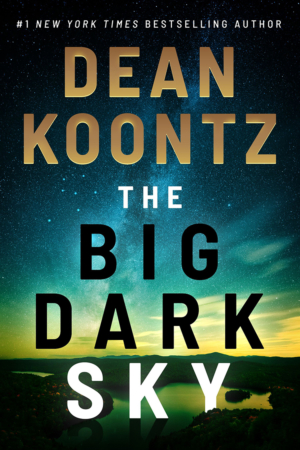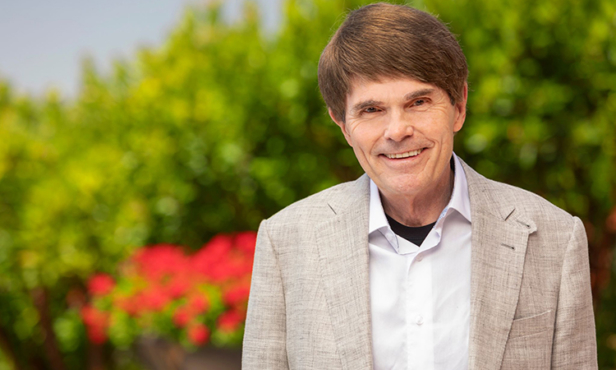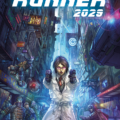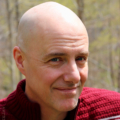As a girl, Joanna Chase thrived on Rustling Willows Ranch in Montana until tragedy upended her life, in Dean Koontz’s new novel The Big Dark Sky. Now thirty-four and living in Santa Fe with only misty memories of the past, she begins to receive pleas for help. Heeding the disturbing appeals, Joanna is called back to her childhood home in Montana, where something now lives that is not family.
She isn’t the only one drawn to the Montana farmstead. People from all walks of life have converged at the remote ranch. They are haunted, on the run, obsessed, and seeking answers to the same omniscient danger Joanna came to confront. All the while, on the outskirts of Rustling Willows, a madman lurks with a vision to save the future. Mass murder is the only way to see his frightening manifesto come to pass.
They have been brought together by an unknown power, for an unthinkable purpose, under Montana’s big dark sky. Their lives entwined, they face an encroaching horror. Unless they can defeat this threat, it will spell the end for humanity…
We speak to Dean Koontz to find out more about The Big Dark Sky…
How would you summarise The Big Dark Sky?
Joanna Chase had an exceedingly strange “secret friend” when she was a child living on a ranch in Montana. Twenty-five years later, she lives in New Mexico and has unaccountably forgotten all about that “friend” until she begins to receive messages by phone, via computer, through her TV, and otherwise that say, “I am in a dark place, Jojo. Please come and help me.” As those appeals become stranger and more insistent, Jojo is compelled to return to Rustling Willows Ranch —and soon finds that others from various walks of life have likewise been drawn there to make a terrifying discovery that will change them forever.
In it’s generous starred review, Booklist said the main villain was “completely wackadoodle but absolutely riveting,” and in all humility I agree. I would note there are two villains, and I’m not sure which is the main one.
What are the challenges when writing a story with such an obfuscated villain?
One can’t keep a villain so mysterious that the readers become frustrated and throw the book across the room. If the thrown book were to hit and seriously injure a bystander, not only the reader who threw it but possibly the writer who inspired the throwing thereof might be sued by said bystander. But it sure is fun to try to walk that mysterious-villain line. In The Big Dark Sky, I had the advantage of another villain, Asher Optime (the wackadoodle mentioned above), who is the furthest thing from obfuscated. He’s in the reader’s face, so they have someone they can love to hate while the second villain can be slowly revealed without books being thrown by previously peaceful readers.
When did you first get the idea for The Big Dark Sky and what was the writing process like for you?
Decades ago, I started collecting stories about real-life synchronicities, those incredible coincidences that are not mere coincidences at all, but meaningful (if highly mysterious) expressions of the intricate connections of all things that quantum mechanics has taught us to expect. I saw a possible novel in synchronicity, but I couldn’t figure out how to express such phenomena compellingly in a narrative. After forty years, it suddenly came together in my strange head.
The process varies from book to book, but one constant is that I immerse myself in the fictional world for sixty or more hours each week, until the world in the story seems as vivid to me as the real world. Somehow, I’ve never been committed to an institution for the delusional.
If any, what were your inspirations for writing The Big Dark Sky?
To earn money to buy toys for my dog, to occupy myself so that I wouldn’t get in trouble with the police, to avoid all kinds of tasks involving physical labor that awaited my attention, and to prove to that snarky reviewer in 1972 that I was not just a flash in the pan, among other things.
What is the theme of the book, and how did you settle on it?
There are several themes weaving under and through the narrative, not least of all the mortal danger of being enslaved, mentally, to an ideology that might seem enlightened but is at its base nihilistic. That’s the sad history of humanity, no less so in our time.

How inspirational was the setting of Montana for The Big Dark Sky?
Montana is one of the most beautiful of our 50 states, with natural wonders that take your breath away. However, the vastness of its spaces and the deeply lonely nature of many of its most scenic vistas can provide a haunting canvas. My wife and I have driven across country several times, 3,000 miles per trip, portions of it in excess of 100 miles an hour, as I love speed, but Montana is one of those places in which you slow down in a sort of wonder because it feels otherworldly.
What was your approach to creating and managing such a wide-ranging group of characters for the ensemble cast?
I stopped doing character profiles and that sort of thing more than half a century ago, when the great fear was an oncoming ice age. I didn’t stop doing profiles because I thought the ice age would force me to move to the equator before the book was written. I just bought a woolen wardrobe and decided to give my characters free will to create themselves. This is especially exhilarating with a large cast, when they start sharpening the details of their personalities by more or less stropping themselves against one another. The only “managing” problem is knowing when to move from one to the other. This is akin to the finesse necessary in screenwriting, knowing when to cut not only from one scene to another but also from one narrative line to another. A large cast can give you more options in that regard, so it is often actually easier than when you have a small cast.
What are you reading right now?
My answers to your questions, as I type them. When this is done, I will return to Cities of the Plain by Cormac McCarthy.
What’s next for you?
A nice dinner and some cabernet sauvignon. In January, Thomas & Mercer will publish The House at the End of the World, which I believe is exceedingly scary and concerns the themes of loss and healing and the too-frequent foolishness of the elites who become world leaders. It’s got some deeply disturbing monsters, most of whom are human.
The Big Dark Sky by Dean Koontz is out now, published by Thomas & Mercer. Enter our competition to win a copy of the novel here.


